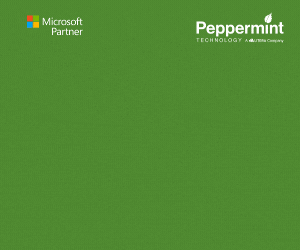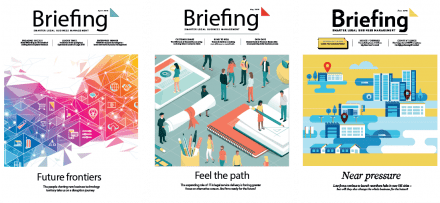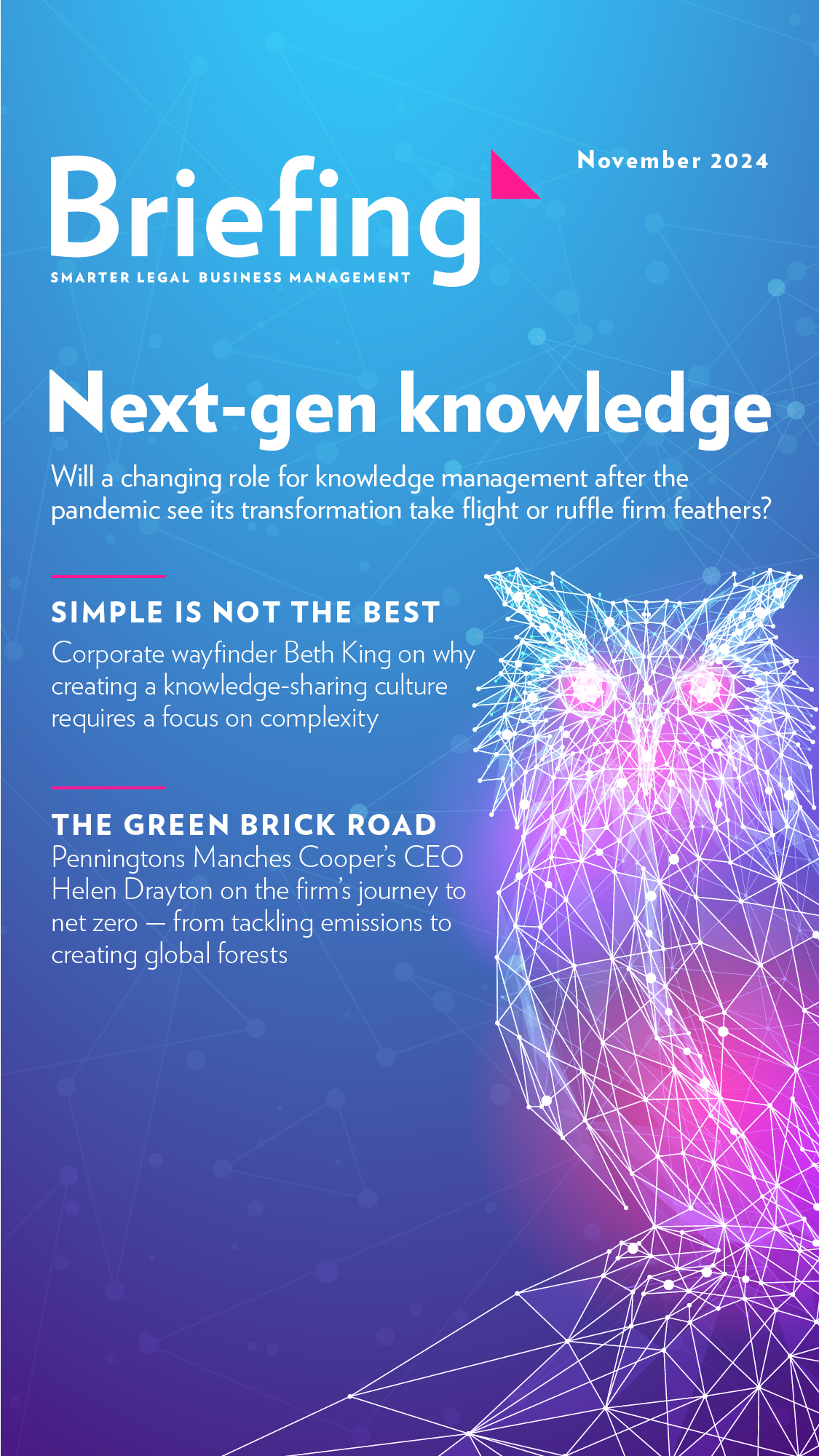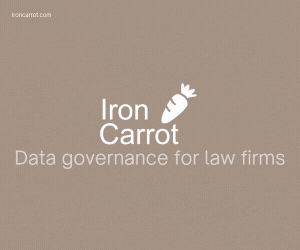AI REvolution drives legal evolution
Change is the new constant in the world of legal — Sandpiper Partners’ annual London Legal Market Conference 2023 brought together leading law firm leaders and corporate general counsel at Clifford Chance on 13 September to discuss three crucial themes: the shifting dynamics of the firm-client relationship, the impact of generative AI and other disruptors, and the necessity for law firms to be open to change.
In today’s legal landscape, clients seek more than just cost-cutting — they crave value. The conference stressed the need for law firms to understand their clients’ unique challenges, adapt to the volatile environment and build value-driven partnerships. Panellists emphasised the importance of two-way partnerships between firms and clients — and highlighted areas of mutual benefit and interest where law firms can bring a range of talent and services to help clients navigate complex issues.
Generative AI emerged as a focal point of discussion. While there’s still some uncertainty about its impact on the legal profession, the consensus was that rather than replacing lawyers, AI can empower them to focus on complex, judgment-based work — aligning with client expectations. It’s a nascent journey but one with exciting possibilities. The legal world is poised for transformation, and firms that leverage AI- and data-driven tools effectively to turbocharge productivity will be at the forefront of this change.
Unsurprisingly, speakers underscored that law firms need to embrace change. London’s dwindling position in global financial markets serves as a wake-up call. Firms must adapt to thrive — and lessons from US law firms, with their innovative and flexible models, offer valuable insights.
Legal culture is also evolving, marked by shifting talent expectations and questions of how to train future legal professionals effectively. Legal today is no longer defined solely by billable hours and utilisation targets, and talent expectations on career paths and professional development have likewise pivoted as the pandemic and generational shifts have redefined what it means to be a ‘people business’ — with a focus on wellbeing and resilience as much as productivity and output. Most panellists agreed that empowering the talent of tomorrow requires less reliance on outmoded management directives and more strategic clarity and inclusive leadership.
At the end of a morning of insightful and often varied perspective encompassing a fundamental shift in the very culture of legal practice, some panellists expressed concern that law firms may be tempted to revert to ‘the old ways of doing things’. As much as law firms may evolve their own unique mix of people, process and technology, there was consensus that the cornerstones of success will be client-centricity, nurturing resilience, and fostering a culture of adaptability — not only to survive but thrive in this new era of legal transformation.
Who really needs to be back in the law firm office?
I’m going to say it: support services staff don’t need to be in the same office as those they support.
It’s true there are some things done better in-person, such as client and associate meetings or strategising a case. In-person collaboration strengthens culture and builds relationships, but when it comes to the day-to-day operations of a law firm, everything from document processing to billing can be done virtually.
Moving support offsite provides an opportunity for law firm leaders to streamline their business processes, bringing greater agility to their operations. This is especially critical during periods of constant change, as we are in today.
Client pressures, data, technology, real estate costs, the war for talent and the return to the office are all major conundrums I hear law firm leaders discuss, and the pressure to invest in these areas is opening the UK legal market up for consolidation. Take the merger between Clyde & Co and BLM: both firms are aligning their strengths in insurance law, but it’s also intended to “provide the full scope of services, technology, data analytics and innovation that clients in this dynamic part of the market require,” according to James Cooper, partner and chair of the firm’s global insurance practice group.
Firms are increasingly looking to merge, float and consolidate their real estate to transfer that investment into technology and innovation. Many leaders are also grappling with ways of bringing staff back to the office and strengthening their culture, with examples at both ends of the spectrum, from Stephenson Harwood suggesting staff may work remotely – albeit for a 20% pay cut – to law firm leaders struggling to get their junior associates to return to the office at all.
Whichever strategy firms adopt, there’s an inherent benefit to having a separate hub providing support services. Continuity of operational services, with a dedicated team that delivers greater workflow efficiency to support critical firm activities, is just as relevant and pivotal to the success of a law firm as legal expertise.
“Many leaders are also grappling with ways of bringing staff back to the office and strengthening their culture, with examples at both ends of the spectrum, from Stephenson Harwood suggesting staff may work remotely – albeit for a 20% pay cut – to law firm leaders struggling to get their junior associates to return to the office at all.”
Yet, some law firm financial and operational directors have told me they have little to no visibility on the capacity or process within their support teams – requests go in one end and come out the other, with directors having no idea how they get completed. There are often a few really good people holding things together – and, if those people leave, there’s a concern that processes will fall apart. This is why we’re seeing more law firms partnering with third-party specialists with well-established virtual hubs, where security is paramount, talent is available and expert teams can harness data to measure productivity, accuracy and speed of fulfilment, helping them make informed decisions and explore improvements.
Even in the event of two firms merging, if one has a standalone third party providing virtual services, such as document processing, e-billing or other administrative support, those operations can keep going smoothly and securely, unaffected by firm politics or bias. We found in our Trends & Opportunities in Law Firm Outsourcing report, conducted by Sandpiper Partners, that 63% of law firms are already outsourcing some or all of their back- office functions and 66% are thinking of expanding into additional areas. We’re seeing greater commitment from UK law firms to outsource these services than we have for the last ten years, because working with outsourcing partners who provide a virtual hub offers law firms the key ingredients for success in a rapidly changing world – greater agility, flexibility, scalability, efficiency and transparency to their operations.
To find out more, visit www.williamslea.com
Blend and flex collaboration
If the office is the glue that holds a firm’s culture together through collaboration, what does the hybrid working model mean for that essential connector? During the pandemic, we successfully pivoted to virtual meeting platforms such as Zoom and MS Teams because it was either that, endless phone calls, or halting business activity all together. While they were adequate substitutes for a while, they didn’t come close to replicating face-to-face interactions. Now, as offices reopen and in-person collaboration returns, how can we optimise collaboration for a workforce that demands flexibility? We can, if we understand it’s not a one-size-fits-all approach.
Law firm leaders need to allow for greater operational flexibility – whether that’s from a resource, budget or real estate perspective – so people can collaborate in different ways, depending on their roles. For relationship-driven roles, in-person collaboration is best to re-invigorate focus and energy, and maintain culture. In my experience, face-to-face meetings with clients and colleagues create more opportunities and ideas than virtual meetings – in-person collaboration tends to have fewer digital distractions. No emails, texts or instant messages popping up on screen. Physical distractions that would seem rude in an in-person meeting (for example, turning your camera off to multitask) are somehow acceptable in a virtual one.
Excitement and passion are often subdued in virtual environments, with many participants remaining on mute, making it harder to create positive engagement and, more importantly, build relationships.
In-person collaboration tends to have fewer digital distractions. No emails, texts or instant messages popping up on screen. Physical distractions that would seem rude in an in-person meeting (for example, turning your camera off to multitask) are somehow acceptable in a virtual one
In the law firm support services environment, collaboration remains crucial. However, success in those roles is largely based on skillsets gained from working closely with like-minded colleagues. Secretaries need to collaborate with fellow secretaries, document processors need to collaborate with fellow document processors, and so on. Two years ago, it was unheard of that a PA or secretary would work anywhere but just outside a partner’s office. The pandemic changed that, with many successfully working in fully remote or hybrid roles. Staff are now even leaving their firms to embrace greater flexibility elsewhere. This is why team arrangements and office space need to be managed carefully by operational leaders to establish a custom balance of face-to-face and virtual interactions.
One way to do that is to create a dedicated, centralised support operation, where support teams can work a blended model of on-site and remote. This way, staff can collaborate in-person, retaining their sense of belonging and embedding themselves into the firm’s culture, all while avoiding the challenges of permanent remote working and the potential attrition pitfalls of a forced, full-time return to the office.
This approach can work for specialised support functions such as document processing, marketing, secretarial and other administrative roles, and it also frees up valuable in-office space for firms to use as collaboration space for fee earners and clients. The most successful firms will be those that find ways to improve collaboration across different working environments, while continuing to work in a way has a lasting, positive impact on their culture.
For further information, visit: www.williamslea.com
Return to the outsourced office
With such momentous change having been foisted on organisations in the last year, it’s unsurprising that many businesses are preparing now for the next big change management challenges headed their way – and, unlike in 2020, it’s possible to predict what those will be.
“Successfully managing remote workers in a hybrid environment – where some people are in the office and others elsewhere, on a changing basis – is the challenge firms are facing next,” says Clare Hart, CEO at Williams Lea. Remote working will have to be operationalised in a sustainable way, she adds, meaning firms will need to be able to keep a close eye on utilisation and the ratio of lawyers to business support staff.
That may be more of a challenge to businesses than the blanket order to remain at home was, she adds. “Even the seemingly trivial matter of scheduling who is in the office when – and who manages that – is a question that needs an answer.” Although most law firms have indeed fleshed out post-pandemic flexible-working arrangements, Hart says there’s still much complexity and practical nuance that’s yet to be proved in practice for the long term. “Legal leaders need to decide how they’ll arrange flexible working for different roles – perhaps some should be permanently remote, and others need more time on-premises. Whatever the policy, that’s going to require some sort of rigour around calendarising office presence.”
Best of both?
There will be benefits, of course, to a hybrid model. Compared with legal, Hart says, other professional services firms, including the Big Four, have long had more agile operations and training. That has left them better prepared to rely less on paper, in-person training and expensive offices. “Law firms’ offices are in some of the most expensive cities in the world – London, New York, San Francisco. The commercial benefit of more distributed working is the ability to cut those costs, especially if you’re outsourcing roles to other geographies nationally or internationally.”
Hart adds that many firms have voiced concern around how to maintain the apprentice-style education legal trainees receive in a more remote environment: “Trainees work closely with partners and become better lawyers as a result – that’s still got to happen, and it won’t happen incidentally, walking down the corridor and crossing paths. It has to be intentionally facilitated, whether that’s a breakfast meeting and a speaker, or a cocktail reception with networking – there has to be a purpose.”
Hart says Williams Lea has adopted ‘community managers’ to enable these kinds of activities, both internally and for its client businesses. “That’s what Williams Lea does. Outsourcing those administrative tasks to a business like ours means firms can set aside the management of remote workers: it’s no longer their problem, it is our problem.”
That’s another reason Hart feels firms have been increasingly looking at outsourcing their business support functions: “Our client firms are saying their lawyers want to practice law, not manage the administration of the business.”
To facilitate that need, she adds that Williams Lea has built centres of excellence around document processing, administrative resourcing, financial support services, and marketing and sales, additionally ensuring quality and the ability to scale. “One UK legal chief operating officer recently said to me ‘quality of service is more important to us than saving a few pounds here and there’. It’s not about the money – it’s about the overheads around technology and training people on it. That lets us provide a better service than is possible internally.”
Reporting back
As part of its service offering, and predating the pandemic, Williams Lea developed ENGAGE, a combined workflow tool, data warehouse, reporting dashboard and technology platform to answer firms’ needs. Within it, fee earners can email a document to be proofread, for instance, to a Williams Lea support professional and then rate the quality of the output. But ENGAGE also meets a critical reporting need: Hart explains: “A lot can be left to interpretation when you generate reports manually through Excel. A dashboard articulates what’s really happening in terms of utilisation much more clearly – and it gives you more detail, such as who’s submitting the most jobs, in which offices, and at what times.”
Having such detail at leaders’ fingertips can also benefit HR and talent management, she adds. “That data can indicate poor workload management, or even potential firm departures – which is really important in the world of managing diversity, equality and inclusion.”
And she points to the increasingly intense war for talent – and how business leaders within firms can also benefit from an outsourcing model. “HR leaders can focus more on winning the client-facing talent they need if the administrative aspects for support roles – background checks, onboarding, training – have been outsourced to teams dedicated to that purpose.” When it comes to the next big challenge, law firms can hopefully now see the road ahead, and it seems support is also close at hand.
Shifting paradigms
Phil Muller, director of legal services at Williams Lea, says that the Covid-19 pandemic is breaking down resistance to change and forcing faster action towards becoming more agile, reducing operational costs and staying competitive.
The year 2019 was one of the strongest years in fee income growth for law firms and many had their most profitable years in recent history. In spite of this, political uncertainty (remember Brexit?), concerns over an economic downturn, rising operational costs, increasing pressure from client demands, and the growing number of millennials and generation Z in the workforce, were already driving firms to look at improving the way they worked. However, progress was hampered by a culture that was firmly entrenched in traditional ways of working.
Resistance to change from partners, data and cybersecurity concerns, and loyalty to long-tenured staff, drove a resistance to virtual support models and more agile ways of working, while slowing down the pace of forward change. The Covid-19 crisis has challenged the status quo, rendered the concerns unfounded, and forced the legal sector to react immediately and drastically to its impact.
Easing the tension between traditional and new ways of working
Meeting the challenge of social distancing and office closures has paved the way for the legal sector to upskill in areas that have been lagging for the past few years, particularly with skills related to information security, agile working, digital platforms, and efficient resource management.
- Dispelling information security fears – Before the pandemic, concerns regarding security, confidentiality and data breaches underpinned a reliance on traditional ways of working. Now necessity has become the mother of invention, and many of the restrictions placed on lawyers, staff, suppliers, and third parties, who touch sensitive firm information, have been relaxed. It remains to be seen if a post-pandemic workplace prioritises onsite working, but firms that will successfully maintain information security will do so with robust process management and strong workflow tools that provide a clear audit trail and chain of custody information]
- The rise of agile working – As the crisis hit, law firms quickly had to ensure that their lawyers and support staff were able to work from home: not standard practice, as it weighs on an industry culture built on relationships and face-to-face interactions. Now, a couple of months in, there’s growing trust that many legal activities can be performed remotely. From matter management and deal closing to virtual collaboration with secretarial and administrative support staff; those resistant to agile-working practices were forced into new ways of working, and to their surprise are quickly adapting to it
- Moving towards a ‘digital first’ mindset – Traditional law firm models are heavily paper-based. As physical offices were forced to close, firms needed ways to share documents without offices, printers and mailrooms. They had to quickly find digital mail and matter-ingestion solutions to support a remote workforce. Again, any concerns over data security and quickly implementing new processes were overcome by necessity. Given that digital mail rooms can be set up in a short space of time (sometimes within a matter of days), it would be difficult to justify completely reverting back to the old model.
- Doing more with less through structured process – The crisis has driven a swift reaction to manage cash and protect the financial health of the firm. Many firms reacted with salary reductions, furloughs and even layoffs. Although rightsizing and scaling back may be a necessity, firms that already outsourced support functions were much more nimble in expanding and contracting support levels in response to the crisis. Additionally, law firms that outsourced key service lines had a partner to help them respond optimally to the economic challenge, so less emotion and management time was required to respond. A global partner that already has the right processes and software firmly in place can deploy staff around the globe efficiently so that no team is bearing too much or too little demand.
Reimagining the law firm office
Real estate needs will evolve as firms align office space requirements to the reality of a more dispersed and mobile workforce. We will most likely see a movement towards real estate space allocated for fee earners and their clients in prime locations, and other front office and support staff allocated to captives or third parties away from high-cost locations.
Driving success with agility and flexibility
Once the dust settles on a post-Covid-19 world we will know which new ways of working will endure and which processes will revert to traditional models. However, every law firm I have spoken to has said they don’t want to go back to the old ways of working. The commercial pressures that have been building for law firms will be exacerbated by the economic fallout from this crisis. With predicted significant revenue decline, the shift to agile-working models to reduce costs will become just as urgent. What we’ve learned is that, when forced, we can break down cultural barriers and traditions to make our businesses more efficient, agile and resilient than ever before, and that there is expertise in the market to help you.














